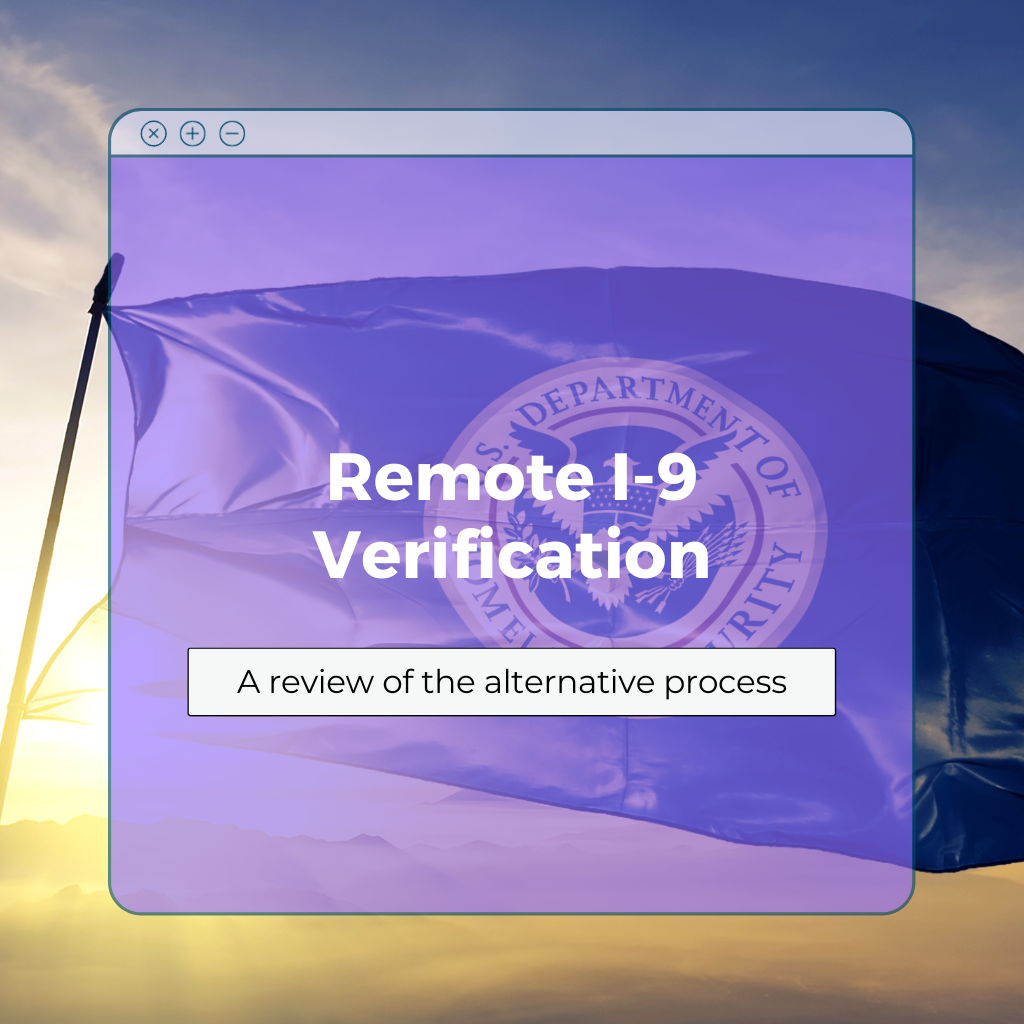The Immigration Reform and Control Act (IRCA) requires all employers to complete the employment eligibility verification (Form I-9) process. As such, employers must ensure that all new hires complete the form. This process required employers to inspect employees’ employment authorization and identification documents in person. Otherwise, they could verify the information through an authorized third party.
However, the COVID-19 pandemic changed this practice due to the lockdowns and push for remote work. The government enacted temporary flexibilities for qualifying situations during the pandemic. Though these flexibilities have ended, the government created an alternative procedure similar to the temporary flexibilities. This procedure allows employers to inspect I-9 documentation remotely for their new hires.
Alternative I-9 Procedure
Only employers enrolled in E-Verify may utilize the new alternative procedure. E-Verify is a web-based, government-run system that allows employers to verify employees’ work authorization. The system compares the information from an employee’s I-9 documentation to the records available to the Social Security Administration (SSA) and the United States Citizenship and Immigration Services (USCIS).
The use of E-Verify is optional. As such, employers can choose to use E-Verify only at specific hiring sites or not at all. In such cases, they must review the documentation in person or through a third-party representative.
Qualified employers must follow several steps to use the alternative procedure:
- The employer must review the provided documents (both the front and back) through e-mail or another method and ensure they appear genuine.
- During the live video interaction, the employer must again examine the documents to ensure they appear genuine.
- Check the box on Form I-9 to indicate that they used the alternative procedure.
- Keep clear and legible copies of the documentation provided by the employee. Make sure there are copies of both the front and back of the documents.
Using the Alternative Procedure
Employers using the alternative procedure must remain enrolled in E-Verify and maintain good standing. Compliance with all other requirements is crucial to qualify for the alternative method. For example, they must ensure all their hiring sites use E-Verify.
Employers should also ensure employees have clear instructions when making copies of I-9 documents available during the live video interaction. They must also maintain clear communication that complies with discrimination and I-9 regulations. After completing the live video interaction, employers must securely store the employee’s I-9 documentation. They must keep these documents for three years after the employee’s hire date or one year after the employee’s termination, whichever is later.
